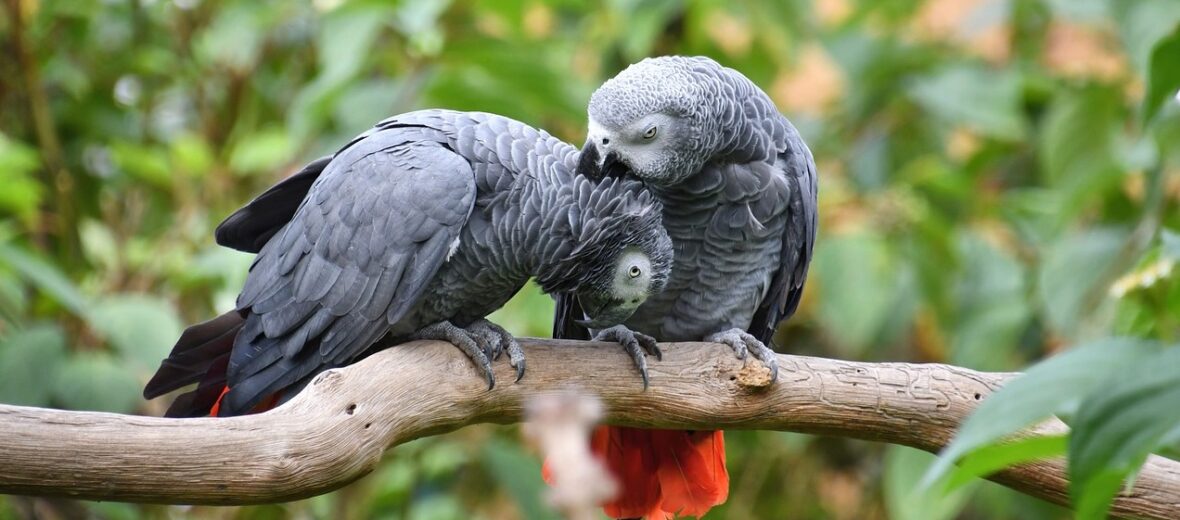
Known the world over for their intellect and loyalty, the African grey parrot is one of the most sought after of the exotic pets. Care should be taken though, as I have worked with these birds and have found that they can be loyal to a fault, if not raised properly. Also, due to their intelligence, they absolutely must be worked with daily and provided the proper stimuli. Sadly, up to 21% of their wild population is poached to quench the thirst for these exotic birds. The IUCN lists these beauties as Endangered, with their population steadily decreasing.
First the Stats…
Scientific name: Psittacus erithacus
Weight: Up to 14 ounces
Length: Up to 13 inches
Wingspan: Up to 20 inches
Lifespan: Up to 60+ years
Now on to the Facts!
1.) They eat fruits, seeds, nuts, flowers, and small insects; technically making them omnivores (eat plant and animal matter).
2.) There are 2 known subspecies, the Congo grey parrot and the Timneh grey parrot.
3.) These birds can be found in Kenya, Cote d’ Iviore, Ghana, the Democratic Republic of the Congo, Togo, Nigeria, Rwanda, Principe, Uganda, Angola, equatorial Guniea, and Burundi.
4.) African greys prefer lowland tropical rainforests, savannah woodland, mangrove and gallery forests, as well as farmland.
5.) Greys can travel over 6 miles a day, in search of food.
But wait, there’s more on the African grey parrot!
6.) Mimicking human speech and other sounds is what has made them famous.
7.) One African grey, in Japan, got lost. It was taken to a nearby vet and began telling the staff his owner’s name and address. It knew it was lost and needed to get home. The parrot was eventually reunited with its owner.
Did you know…?
African grey parrots have been classified as having the intelligence of up to a 5 year old child! They have the ability to identify, refuse, request, categorize, and quantify around 80 different objects. These birds even have the ability to answer questions about shapes, colors, and even concepts.
8.) Grey parrots can be taught over a 100 word vocabulary!
9.) They are classified as Old World parrots. Old World animals come from Africa and Asia.
10.) Africans tend to be very friendly with their owners, but a little standoffish with others.
But wait, there’s still more on the African grey parrot!
11.) Like macaws, parakeets, and caiques, African grey parrots are considered true parrots.
12.) These birds are prey to larger birds, raptors, vultures, and their eggs fall prey to monkeys and pythons.
Now a Short African Grey Parrot Video!
Also, check out the Critter Science YouTube channel. Videos added frequently!
Want to suggest a critter for me to write about? Let me know here.



